By WCT Conservation Research and Data Specialist Anna Willig
Cover Photo by Jennifer Mathes
Salt levels, often measured as chloride concentration, have increased dramatically in U.S. streams since the 1940s, when it became common practice in the U.S. to salt roads during winter storms. The Pennsylvania Department of Transportation applies over 800,000 tons of road salt per year to state roads in addition to a similar amount applied by municipalities and private citizens. These numbers add up to over 1.5 million tons of road salt applied per year in Pennsylvania alone, all of which eventually ends up in waterways. Though salt is naturally present in streams at trace concentrations due to the weathering of rocks and soils, the insects, fish, mussels, and amphibians that live in local waterways cannot tolerate the spikes in salt concentration that occur in winter.
Road salts threaten streams in two ways. During and after a winter storm, salt concentrations in streams can skyrocket as salty meltwater rushes in, creating conditions that are acutely toxic for fish and other stream creatures. Salts also build up in soils and in groundwater, slowly entering streams throughout the year and resulting in chronically elevated salt concentrations. Many stream organisms, particularly freshwater mussels, cannot tolerate these long-term increases in salt concentration and gradually disappear from streams.
In the streams in the Willistown region, we have seen both acute spikes in salt concentration and evidence of chronic build-up through our monthly water quality monitoring program in the headwaters of Ridley, Crum, and Darby Creeks. Chloride concentration, an indicator of salt pollution, is typically highest in winter months, with a notable spike occurring in February 2021. The spike in February 2021 was caused by snowmelt actively washing road salts into the streams. Chloride concentrations remain elevated throughout the year, often exceeding 50 mg/L, the maximum salt threshold that the most sensitive stream organisms can tolerate.
Figure 1. Chloride concentration, an indicator of salt contamination, in the headwaters of Ridley, Crum, and Darby Creeks. All the red points indicate sample sites in Ridley Creek, the green points indicate sample sites in Crum Creek, and the blue points indicate a sample site in Darby Creek.
Salt contamination in streams also harms human health and infrastructure. Road salt can end up in drinking water wells and water supplies and often is not removed by water treatments facilities. As salts move through the environment, they can pick up other pollutants along the way, further contaminating streams and drinking water. Salts also speed up the corrosion of metal pipes and concrete, shortening the lifespan of infrastructure. Similarly, overuse of salt rusts and corrodes cars, leading to expensive repairs.
While road salt is necessary for safety, here are some ways to reduce salt pollution:
- Shovel before applying salt. Even on cold days, the sun can still melt a thin layer of snow and may take care of the problem for you.
- Do not use more than the recommended amount of salt. Only 1 mug full of salt, or 12 oz., is required to melt a 20-foot-long driveway. Read the instructions on your bag to see how much you need.
- If you feel crunching when you walk, you applied too much! Salt only works when it dissolves, so all the crystals that you feel crunching underfoot are not actually melting snow and ice.
- After the snow and ice have melted, sweep up any remaining salt! Save it and apply it during the next storm.
- Report large piles of salt on roads to your local municipality.
- Share information about road salt and encourage your neighbors to use less!
To learn more about how to reduce salt pollution, check out these resources:

